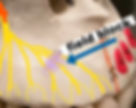INFILTRATION -vs- NERVE BLOCK
- Tina Clarke
- Jun 28, 2021
- 2 min read
Updated: Oct 10, 2022
Which one are you really giving?
In dentistry we often use the terms infiltrate and nerve block when we are talking about giving local anesthesia. I often get questions wondering what the difference is between these two injections. In some areas of the mouth it may not seem like there is a difference at all. However, there are actually three different types of injections we perform in dentistry. These are called infiltration, field block, and nerve block.
INFILTRATION: Is when anesthetic is delivered to the terminal branches of the nerve and is confined to a small region of anesthesia. In dentistry, this would technically be for injections into the papilla for hemostasis or a PDL injection.
FIELD BLOCK: Some clinicians may call it a supraperiosteal injection. The reason it is considered a field block is because it anesthetizes multiple structures at a time. For example, the pulp, facial gingiva, and lip. Because the anesthetic is delivered further away from the terminal branches but still near the affected area, the local field will become numb. We don’t use this term often in dentistry. It should be used when anesthetic is deposited above the root apex. For example, a single tooth injection (infiltration above #9) or one that does a couple of teeth at a time, like an ASA injection.
NERVE BLOCK. This injection will anesthetize multiple teeth in a quadrant. Generally, the deposition site is far from the targeted teeth, closer to a nerve trunk and impact several structures. Examples of injections would be the Inferior Alveolar (IA), Infraorbital (IO), and the Posterior Superior Alveolar (PSA).
Here’s the thing.
We don’t use the term field block in dentistry (if we do it is rarely done). We either say its an infiltration or a nerve block. Field blocks tend to get lumped into the infiltration category. Even then, there is debate on whether a certain injection like the MSA or mental is considered a nerve block or a field block (infiltration). This can make someone’s head spin.

Looking at multiple textbooks and literature it appears that an injection in which the depth of penetration is greater than 10 mm is considered a nerve block, everything else is infiltration.
For all my dental hygiene friends who live in states that can only perform infiltration techniques maybe this bit of information will help you decide which injections to give and how to give them.
It doesn’t matter if you are giving an infiltration, field block or a nerve block, understanding injection technique is crucial to providing safe and effective pain management to your patients. I encourage you to brush up on your injection skills so you can hit your best shot!
CHEERS,
Tina
If you are ready to begin your journey to confidently Hit Your Best Shot head to www.teachertina.thinkific.com to get your booster shot of confidence.


